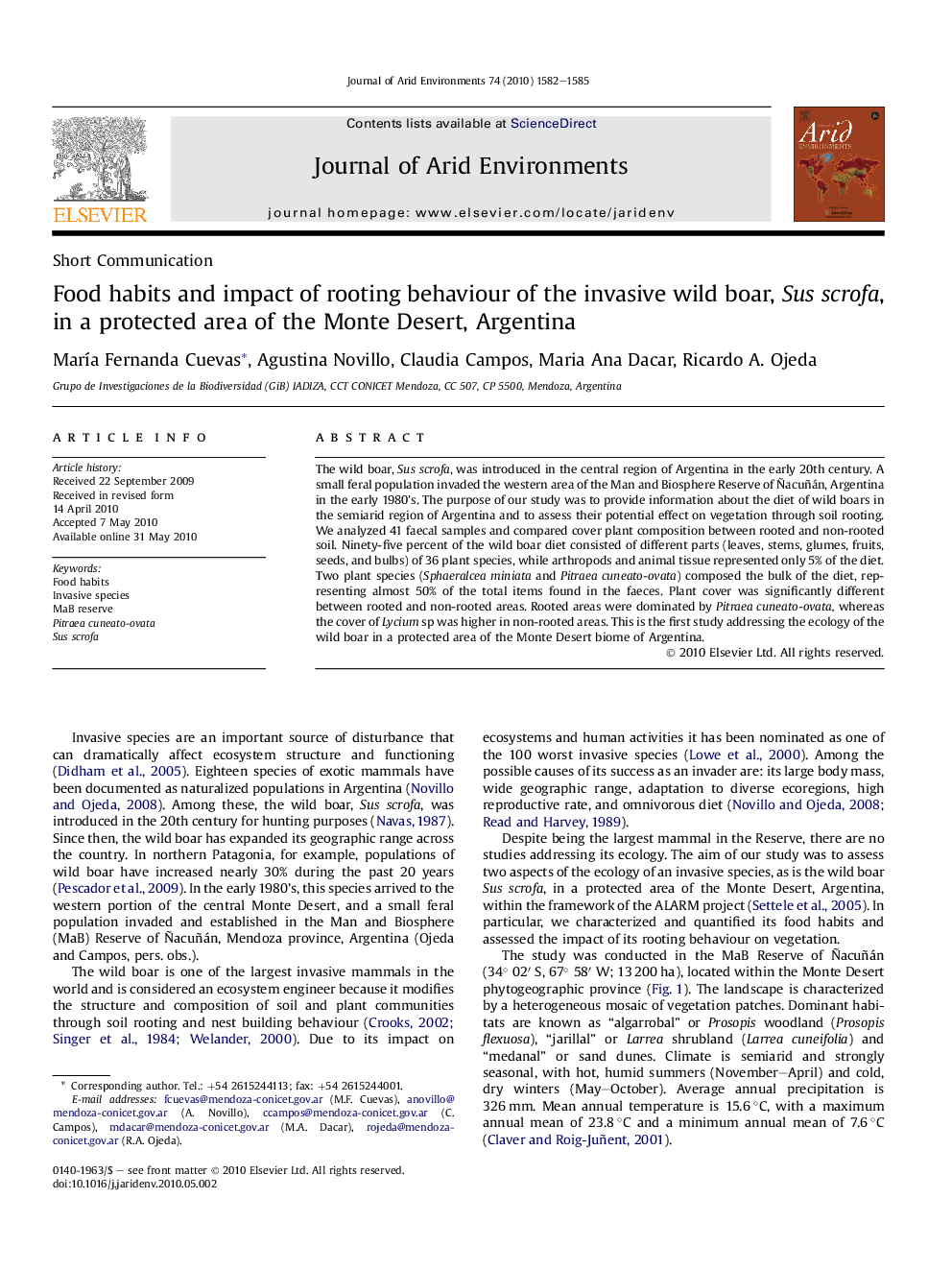| Article ID | Journal | Published Year | Pages | File Type |
|---|---|---|---|---|
| 4393720 | Journal of Arid Environments | 2010 | 4 Pages |
The wild boar, Sus scrofa, was introduced in the central region of Argentina in the early 20th century. A small feral population invaded the western area of the Man and Biosphere Reserve of Ñacuñán, Argentina in the early 1980’s. The purpose of our study was to provide information about the diet of wild boars in the semiarid region of Argentina and to assess their potential effect on vegetation through soil rooting. We analyzed 41 faecal samples and compared cover plant composition between rooted and non-rooted soil. Ninety-five percent of the wild boar diet consisted of different parts (leaves, stems, glumes, fruits, seeds, and bulbs) of 36 plant species, while arthropods and animal tissue represented only 5% of the diet. Two plant species (Sphaeralcea miniata and Pitraea cuneato-ovata) composed the bulk of the diet, representing almost 50% of the total items found in the faeces. Plant cover was significantly different between rooted and non-rooted areas. Rooted areas were dominated by Pitraea cuneato-ovata, whereas the cover of Lycium sp was higher in non-rooted areas. This is the first study addressing the ecology of the wild boar in a protected area of the Monte Desert biome of Argentina.
